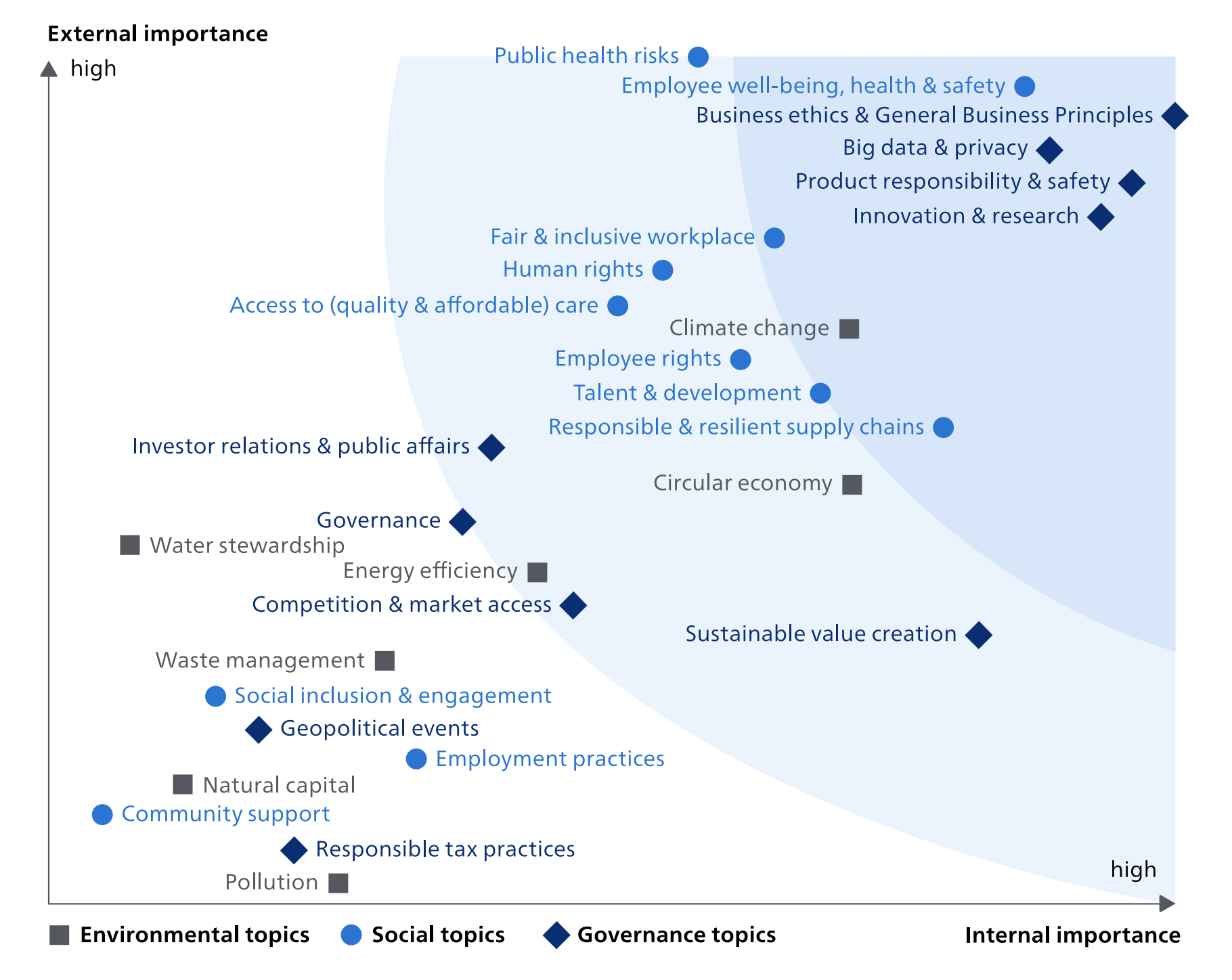ACCOUNTING & SUSTAINABILITY
Sustainability Performance Indicators (SPIs) and Materiality
SPIs differ by industry and categorizing them accordingly ensures that sustainable reports are as useful as possible. Traditional key performance indicators (KPIs) are the basis of what to include as disclosures to financial statements. SPIs function the same way but measure performance in sustainability. SPIs that are meaningfully linked to KPIs function to improve relevance, conciseness, and comprehensiveness of sustainable reports.

Philips Materiality Matrix

Determining appropriate SPIs for an industry or company is done with materiality tests, which rank items according to their materiality, or importance. Materiality assessments help companies identify key risks and opportunities. Materiality tests also demonstrate that there are some common SPI’s that are important across industries such as climate change management or gender equity, but others are specific to certain industries. For example, customer privacy is a material SPI for the banking industry but much less of a concern in the automobile industry.
On the left is an example of a materiality matrix from a recent Philips Annual Report. The matrix shows how Philips, a multinational healthcare technology company, determines what environmental, social and governance issues are “material”. Notice that the axis measures an issues’ importance internally (the x-axis) and externally (the y-axis). Philips followed a rigorous process to develop this matrix involving conversations with a wide variety of stakeholders (e.g. investors, customers, partners) and analysis of company and trend data. With this information, Philips can determine precise sustainability performance indicators (SPIs).
SPI’s are most effective when they are broken down by industries due to the fact that each industry faces significantly different challenges in environmental, social, and governance (ESG) issues. This limitation of SPIs to the industries they apply to allows:
- Exploration of the specific impact an industry can have on society
- Prioritize the most relevant information that is feasible to collect and report
- Standardized frameworks to report and compare
SASB Materiality Map
A great example of developing SPIs and breaking them down by industry is provided by the Sustainability Accounting Standards Board (SASB). SASB uses research and market input to determine SPIs and categorize them by industry sector, which were developed by SASB and differ from the traditional North American industry sectors used in financial reporting.
Through this process, they have developed a set of 77 industry standards. SASB has developed tools like the SASB Materiality Map® and the Standards Navigator database to help understand, visualize, and utilize the standards. These resources, specifically, the SASB Materiality Map® interactively explains which SPIs are relevant to each industry.
(Source: https://youtu.be/-R3sH7DmaAA)
Learn about more sustainability concepts within this major.
